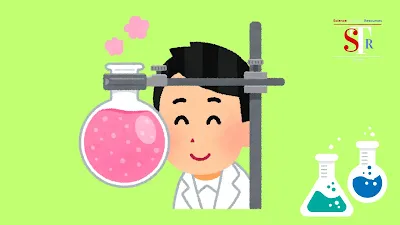Acid, Base, or Salt? Challenge Yourself with 30 MCQs-
Acid, Base, or Salt? Challenge Yourself with 30 MCQs.Think you've got a grip on acids, bases, and salts? Prove it! This blog post serves up 30 challenging multiple-choice questions straight from the NCERT textbook for Class 10. Each question comes with a detailed explanation to solidify your understanding. Whether you're aiming for top marks or just want to test your knowledge,this quiz is for you. Ready to dive in?
Acid, Base, or Salt? Challenge Yourself with 30 MCQs.
Here are 30 unique easy multiple-choice questions (MCQs) on Acids, Bases, and Salts for Class 10 students based on the NCERT curriculum. Each question is followed by its answer and a brief explanation.
Acid, Base, or Salt are Important concepts to keep in Mind.
Acid-base indicators are dyes or mixtures of dyes which are used to indicate the presence of acids and bases.
Acidic nature of a substance is due to the formation of H+ (aq) ions in solution. Formation of OH– (aq) ions in solution is responsible for the basic nature of a substance.
When an acid reacts with a metal, hydrogen gas is evolved and a corresponding salt is formed.
When a base reacts with a metal, along with the evolution of hydrogen gas a salt is formed which has a negative ion composed of the metal and oxygen.
When an acid reacts with a metal carbonate or metal hydrogen carbonate, it gives the corresponding salt, carbon dioxide gas and water.
Acidic and basic solutions in water conduct electricity because they produce hydrogen and hydroxide ions respectively.
The strength of an acid or an alkali can be tested by using a scale called the pH scale (0-14) which gives the measure of hydrogen ion concentration in a solution.
A neutral solution has a pH of exactly 7, while an acidic solution has a pH less than 7 and a basic solution a pH more than 7.
Living beings carry out their metabolic activities within an optimal pH range. Mixing concentrated acids or bases with water is a highly exothermic process.
Acids and bases neutralise each other to form corresponding salts and water.
Water of crystallisation is the fixed number of water molecules present in one formula unit of a salt.
Salts have various uses in everyday life and in industries.
Acid-base indicators are dyes or mixtures of dyes which are used to indicate the presence of acids and bases.
Acidic nature of a substance is due to the formation of H+ (aq) ions in solution. Formation of OH– (aq) ions in solution is responsible for the basic nature of a substance.
When an acid reacts with a metal, hydrogen gas is evolved and a corresponding salt is formed.
When a base reacts with a metal, along with the evolution of hydrogen gas a salt is formed which has a negative ion composed of the metal and oxygen.
When an acid reacts with a metal carbonate or metal hydrogen carbonate, it gives the corresponding salt, carbon dioxide gas and water.
Acidic and basic solutions in water conduct electricity because they produce hydrogen and hydroxide ions respectively.
The strength of an acid or an alkali can be tested by using a scale called the pH scale (0-14) which gives the measure of hydrogen ion concentration in a solution.
A neutral solution has a pH of exactly 7, while an acidic solution has a pH less than 7 and a basic solution a pH more than 7.
Living beings carry out their metabolic activities within an optimal pH range. Mixing concentrated acids or bases with water is a highly exothermic process.
Acids and bases neutralise each other to form corresponding salts and water.
Water of crystallisation is the fixed number of water molecules present in one formula unit of a salt.
Salts have various uses in everyday life and in industries.
👇Acid, Base, or Salt? Challenge Yourself with 30 MCQs👇
1. Which of the following is a strong acid?
a) Acetic acid
b) Hydrochloric acid
c) Citric acid
d) Carbonic acid
Answer: b) Hydrochloric acid
Explanation: Hydrochloric acid is a strong acid because it completely ionizes in water.
2. Which of the following is a weak base?
a) Sodium hydroxide
b) Potassium hydroxide
c) Ammonium hydroxide
d) Calcium hydroxide
Answer: c) Ammonium hydroxide
Explanation: Ammonium hydroxide is a weak base because it partially ionizes in water.
3. What is the pH value of a neutral solution?
a) 1
b) 7
c) 10
d) 14
Answer: b) 7
Explanation: A neutral solution has a pH of 7, indicating equal concentrations of H⁺ and OH⁻ ions.
4. Which of the following turns red litmus paper blue?
a) Vinegar
b) Lemon juice
c) Soap solution
d) Carbonated water
Answer: c) Soap solution
Explanation: Soap solution is basic and turns red litmus paper blue.
5. Which gas is usually evolved when an acid reacts with a metal?
a) Oxygen
b) Carbon dioxide
c) Hydrogen
d) Nitrogen
Answer: c) Hydrogen
Explanation: When acids react with metals, hydrogen gas is typically released.
6. Which of the following substances is alkaline in nature?
a) HCl
b) NaOH
c) CH₃COOH
d) H₂SO₄
Answer: b) NaOH
Explanation: NaOH (Sodium hydroxide) is a strong base, making it alkaline.
7. What is the chemical formula for common salt?
a) NaCl
b) KCl
c) NaOH
d) KOH
Answer: a) NaCl
Explanation: The chemical formula for common salt is NaCl.
8. Which acid is found in the stomach?
a) Sulfuric acid
b) Hydrochloric acid
c) Acetic acid
d) Nitric acid
Answer: b) Hydrochloric acid
Explanation: Hydrochloric acid aids in digestion in the stomach.
9. Which of the following is an example of a neutral salt?
a) NaCl
b) Na₂CO₃
c) NH₄Cl
d) NaHSO₄
Answer: a) NaCl
Explanation: NaCl is a neutral salt formed from a strong acid and a strong base.
10. Which of the following is used to neutralise acidity in soil?
a) HCl
b) NaCl
c) Ca(OH)₂
d) H₂SO₄
Answer:c) Ca(OH)₂
Explanation: Calcium hydroxide (lime) is used to neutralise acidic soils.
11. What is the pH range of acidic solutions?
a) 0-7
b) 7-14
c) 4-6
d) 8-14
Answer: a) 0-7
Explanation:** Acidic solutions have a pH below 7.
12. Which of the following is a natural indicator of acids and bases?
a) Litmus
b) Methyl orange
c) Phenolphthalein
d) Turmeric
Answer:a) Litmus
Explanation: Litmus is a natural indicator that shows red in acidic
and blue in basic solutions.
13. Which of the following is a characteristic of bases?
a) Sour taste
b) Bitter taste
c) Colourless in phenolphthalein
d) Red in litmus
Answer:b) Bitter taste
Explanation:** Bases typically have a bitter taste and feel slippery.
14. Which acid is commonly found in citrus fruits?
a) Hydrochloric acid
b) Sulfuric acid
c) Acetic acid
d) Citric acid
Answer: d) Citric acid
Explanation:** Citric acid is present in citrus fruits like oranges and lemons.
15. What is the nature of sodium bicarbonate (baking soda)?
a) Acidic
b) Basic
c) Neutral
d) Amphoteric
Answer:** b) Basic
Explanation: Sodium bicarbonate is a mild base.
16. Which of the following can neutralise a base?
a) Another base
b) Salt
c) Acid
d) Water
Answer: c) Acid
Explanation: Acids neutralise bases by reacting with them to form salt
and water.
17. Which of the following is not an alkali?
a) NaOH
b) KOH
c) Ca(OH)₂
d) H₂SO₄
Answer: d) H₂SO₄
Explanation: H₂SO₄ is sulfuric acid, not a base.
18. What color does phenolphthalein turn in a basic solution?
a) Red
b) Blue
c) Pink
d) Green
Answer: c) Pink
Explanation: Phenolphthalein turns pink in a basic solution.
19. What is the common name for calcium carbonate?
a) Quicklime
b) Slaked lime
c) Limestone
d) Chalk
Answer: c) Limestone
Explanation: Calcium carbonate is commonly known as limestone.
20. Which salt is used to preserve food?
a) Sodium bicarbonate
b) Sodium chloride
c) Potassium nitrate
d) Sodium sulphate
Answer:b) Sodium chloride
Explanation: Sodium chloride (common salt) is used in food preservation.
21. Which of the following acids is used in car batteries?
a) Nitric acid
b) Hydrochloric acid
c) Sulfuric acid
d) Acetic acid
Answer:c) Sulfuric acid
Explanation: Sulfuric acid is used as an electrolyte in car batteries.
22. What happens to the pH of water when a few drops of lemon juice are added?
a) Increases
b) Decreases
c) Remains the same
d) Becomes neutral
Answer:b) Decreases
Explanation:Lemon juice is acidic, so adding it to water decreases the pH.
23. Which of the following is a mineral acid?
a) Citric acid
b) Lactic acid
c) Hydrochloric acid
d) Acetic acid
Answer: c) Hydrochloric acid
Explanation: Hydrochloric acid is a mineral acid, derived from minerals
rather than organic sources.
24. Which salt is formed when hydrochloric acid reacts with sodium hydroxide?
a) NaCl
b) NaNO₃
c) Na₂SO₄
d) NaHCO₃
Answer:a) NaCl
Explanation: The reaction between HCl and NaOH forms sodium chloride (NaCl)
and water.
25. Which of the following has a pH less than 7?
a) Milk
b) Lemon juice
c) Blood
d) Baking soda
Answer:b) Lemon juice
Explanation: Lemon juice is acidic, so it has a pH below 7.
26. Which ion is responsible for acidity in a solution?
a) OH⁻
b) H⁺
c) Na⁺
d) Cl⁻
Answer: b) H⁺
Explanation: The presence of H⁺ ions makes a solution acidic.
27. What is the chemical formula of sulfuric acid?
a) HNO₃
b) H₂SO₄
c) HCl
d) H₂CO₃
Answer: b) H₂SO₄
Explanation: The chemical formula for sulfuric acid is H₂SO₄.
28. Which of the following is a property of acids?
a) Bitter taste
b) Turn blue litmus red
c) Slippery feel
d) Turn phenolphthalein pink
Answer:b) Turn blue litmus red
Explanation: Acids turn blue litmus paper red.
29. Which compound is commonly known as washing soda?
a) Na₂CO₃
b) NaHCO₃
c) CaCO₃
d) NaCl
Answer: a) Na₂CO₃
Explanation: Na₂CO₃ (Sodium carbonate) is commonly called washing soda.
30. What is the main component of antacids?
a) HCl
b) NaOH
c) Mg(OH)₂
d) H₂SO₄
Answer: c) Mg(OH)₂
Explanation: Magnesium hydroxide is commonly used in antacids to neutralise stomach acid.
Acid, Base, or Salt? Challenge Yourself with 30 MCQs -These MCQs cover a range of fundamental concepts related to acids, bases, and salts, suitable for Class 10 students.
Conclusion
So, how did you fare in our acid, base, and salt challenge? We hope these 30 MCQs helped you test your knowledge and understanding of this essential chemistry topic. Remember, practice makes perfect, so don't hesitate to revisit these questions or explore additional resources to solidify your grasp on the subject.
If you found this quiz helpful, be sure to share it with your classmates. Let's work together to master chemistry!
Do you have any other questions about acids, bases, or salts? Feel free to leave a comment below!












If you have any doubts please comment